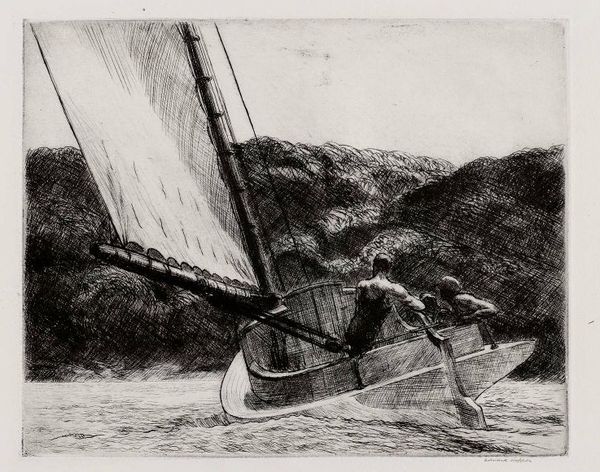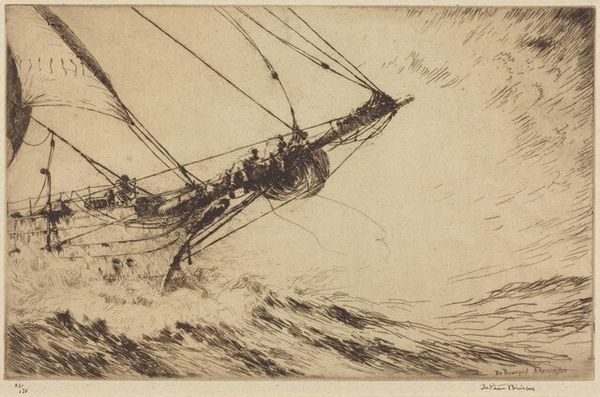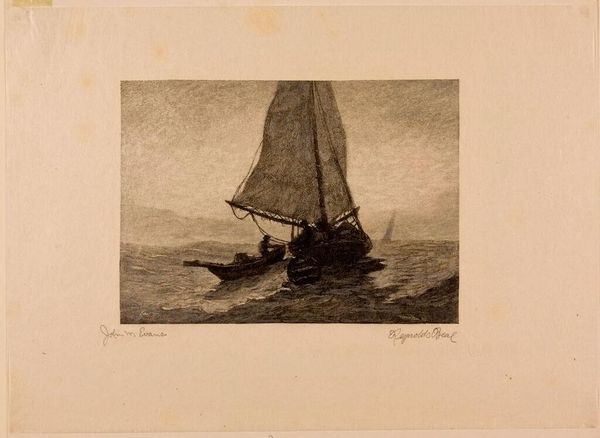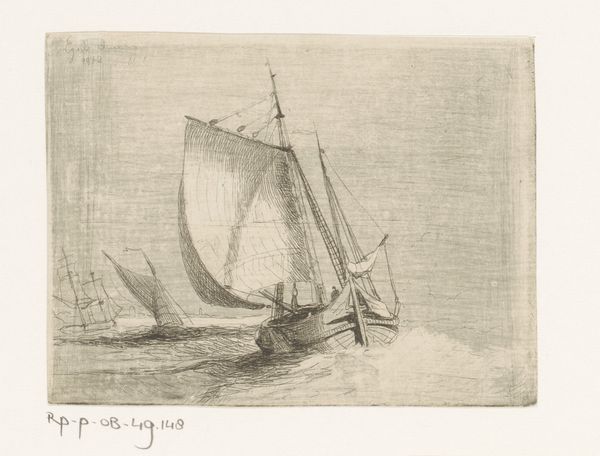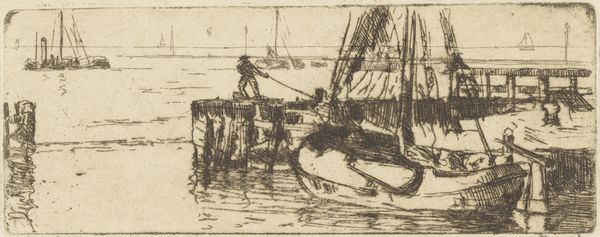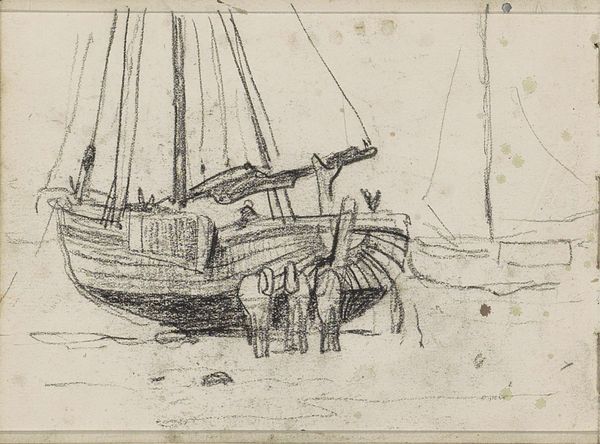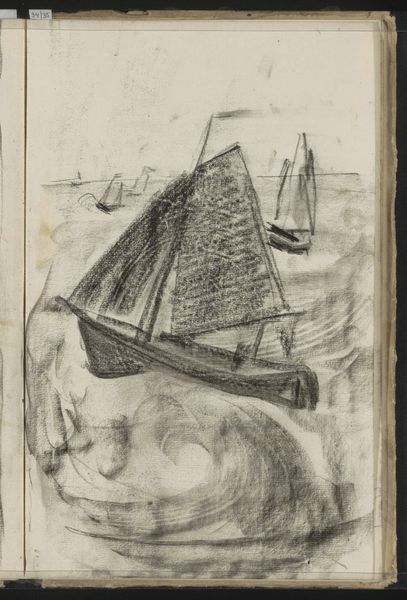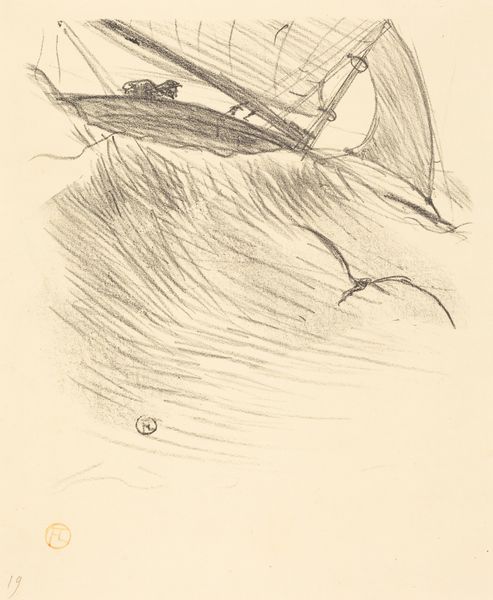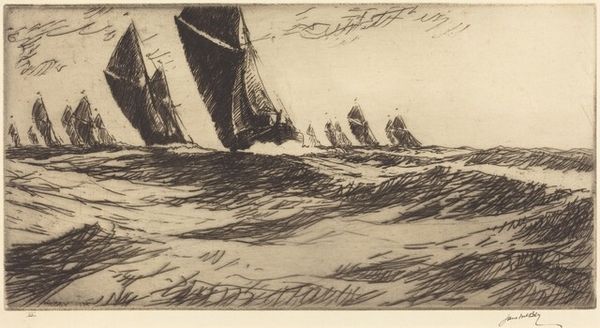
Copyright: Public Domain: Artvee
Editor: So, this is Henri de Toulouse-Lautrec’s “Oceano Nox” from 1895. It looks like it's a print, possibly a lithograph or maybe just pencil on paper. There’s a solitary figure on what appears to be a ship, rendered in very grainy detail, capturing a somewhat somber scene at sea. What strikes you when you look at it? Curator: Immediately, I think about the means of production and the social context. This piece, crafted through a readily available and reproducible medium like lithography, challenges the elitist perceptions surrounding the "high" art of painting. What about the implications of disseminating art through printmaking? The image captures a solitary figure working, drawing attention to the labor inherent in seafaring. Think about how the materials used and the ease of reproduction impacted access to art, blurring the lines between consumption, labour, and artistry. Editor: That’s an interesting perspective. I was mostly seeing the romanticism, but considering it’s a print does shift things. I guess the choice of printmaking democratizes the artwork, in a sense. How does that change our interpretation of the image of a solitary sailor? Curator: Exactly! Toulouse-Lautrec chose a method that allowed wider access. He's documenting a worker, perhaps from the margins, doing physical labour. Can we therefore not ask ourselves how his production method affects its subject and meaning? Where do we see that echoed throughout other impressionistic works of the era? Editor: So, it’s less about glorifying the sea and more about presenting labor in an accessible format. It definitely changes my perspective. Thank you for pointing that out. Curator: And thank you for noticing this interplay; examining the 'how' and 'why' informs our understanding greatly!
Comments
No comments
Be the first to comment and join the conversation on the ultimate creative platform.

